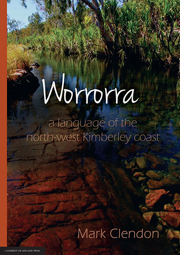Book contents
- Frontmatter
- Dedication
- Contents
- List of tables
- List of figures
- Abbreviations
- Acknowledgements
- Chapter One introduction
- Chapter Two segmental phonology
- Chapter Three morphophonology
- Chapter Four nouns and noun classes
- Chapter Five indicative mood and basic verbal morphology
- Chapter Six adjectives and inalienable nouns
- Chapter Seven pronouns, demonstratives, anaphors, deictics
- Chapter Eight optative, counterfactual and exercitive moods
- Chapter Nine number
- Chapter Ten adverbs and postpositional phrases
- Chapter Eleven complex predicates
- Chapter Twelve experiencer constructions
- Chapter Thirteen objects and possession
- Chapter Fourteen complement clauses
- Chapter Fifteen subjunctive verbs
- Chapter Sixteen middle voice
- Chapter Seventeen discourse cohesion
- Chapter Eighteen kinship terms
- Appendices
- References
Chapter Three - morphophonology
Published online by Cambridge University Press: 05 October 2014
- Frontmatter
- Dedication
- Contents
- List of tables
- List of figures
- Abbreviations
- Acknowledgements
- Chapter One introduction
- Chapter Two segmental phonology
- Chapter Three morphophonology
- Chapter Four nouns and noun classes
- Chapter Five indicative mood and basic verbal morphology
- Chapter Six adjectives and inalienable nouns
- Chapter Seven pronouns, demonstratives, anaphors, deictics
- Chapter Eight optative, counterfactual and exercitive moods
- Chapter Nine number
- Chapter Ten adverbs and postpositional phrases
- Chapter Eleven complex predicates
- Chapter Twelve experiencer constructions
- Chapter Thirteen objects and possession
- Chapter Fourteen complement clauses
- Chapter Fifteen subjunctive verbs
- Chapter Sixteen middle voice
- Chapter Seventeen discourse cohesion
- Chapter Eighteen kinship terms
- Appendices
- References
Summary
Clearly the most distinctive aspect of Worrorra phonology, and one of the most distinctive features of the entire language, is the amount of cluster assimilations or fusion involved in any account of its morphology. The assimilations involved are generally consistent with those seen in other Arafuran or Australian non-Pama-Nyungan languages such as Maung, Ungarinyin and Wubuy; nevertheless the extent and nature of this phenomenon as seen in Worrorra is striking by any account. Observe, for example, the forms kunjungu ‘s/he did/said it’ and nye ‘s/he will do/say it;’ or nyimbu ‘s/he hits her’ and ko ‘s/he hits him.’ These two pairs do not constitute instances of suppletion as might be supposed; there is indeed very little suppletion in the language. Both pairs of forms are regular, non-suppletive (ie predictable) entries in the conjugational paradigms of kuN[]=yi ‘do’ and = bwu ‘hit’ respectively. They may only be understood as regular and predictable entries in such paradigms, however, if analysis at a level of abstraction beyond the phonemic level is undertaken.
Morphophonemic changes occur when morphemes are joined. Morphophonemic analysis consists of generalizations about the patterns in which phonemes occur at or near morpheme boundaries, that is to say that morphophonemic processes operate across morpheme boundaries, not within morphemes. Segments at this level of abstraction take part in processes that are analogous to allophonic alternations: morphophonemic rules differ from phonological rules in the sensitivity they ascribe to phonemes with respect to their morphological as well as to their phonetic environments.
- Type
- Chapter
- Information
- WorrorraALanguage of the North-West Kimberley Coast, pp. 48 - 65Publisher: The University of Adelaide PressPrint publication year: 2014



